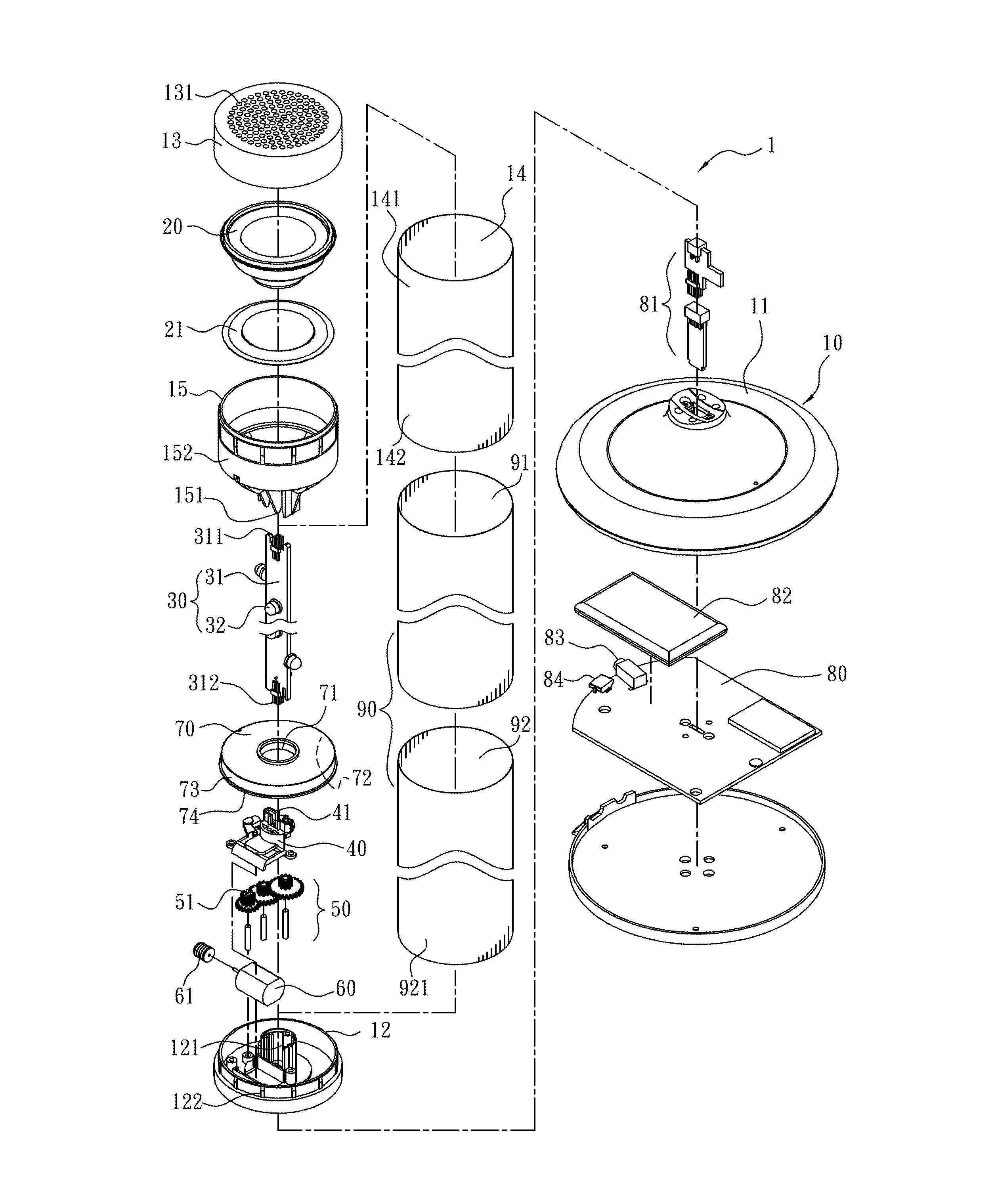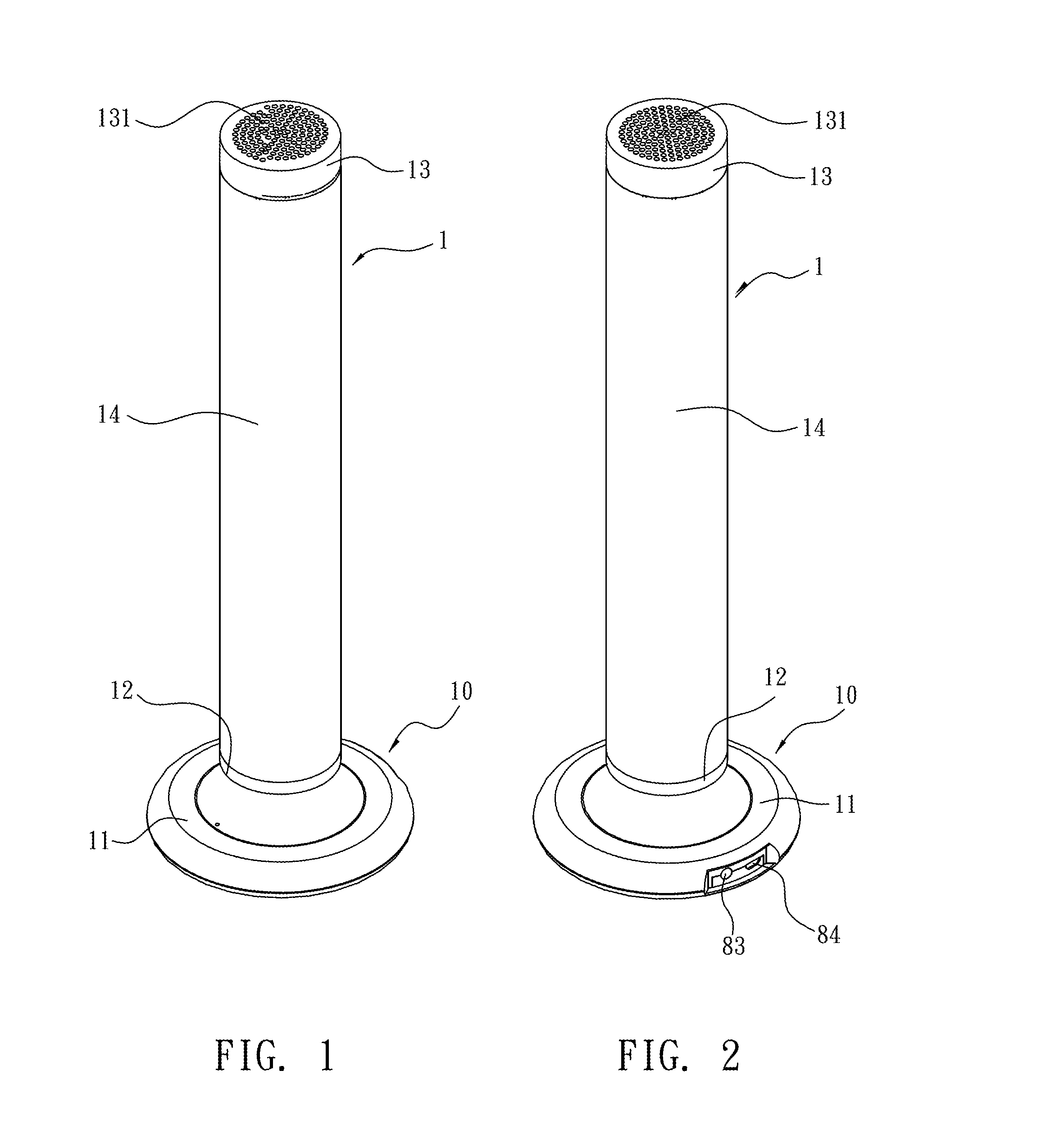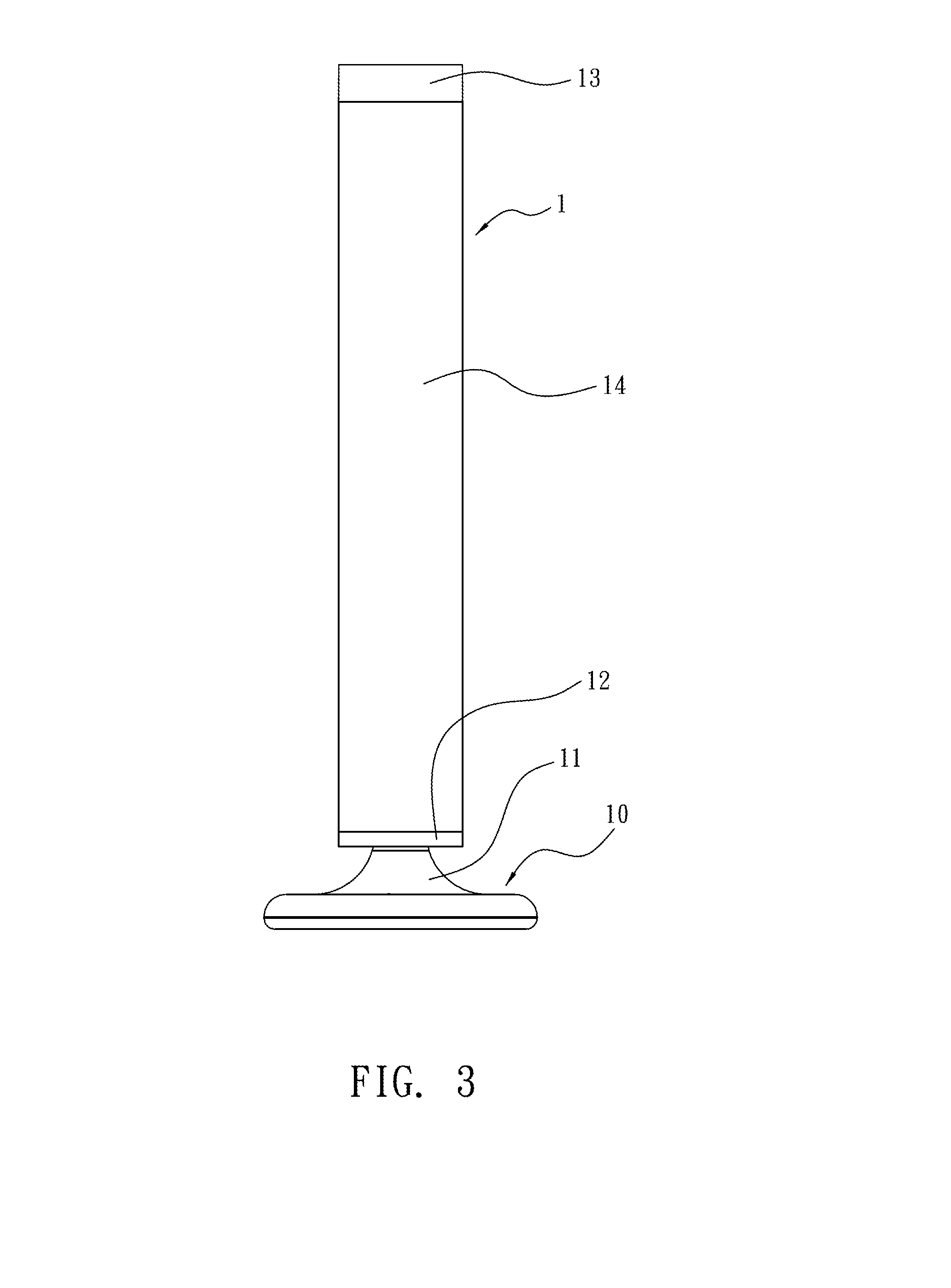Light with dynamic light pattern
- Summary
- Abstract
- Description
- Claims
- Application Information
AI Technical Summary
Benefits of technology
Problems solved by technology
Method used
Image
Examples
first embodiment
[0022]Refer from FIG. 1 to FIG. 6, the present invention is a vertical cylindrical light 1. Refer to FIG. 4, the light 1 of the present invention further includes an audio unit 20. The audio unit 20 is an optional accessory of the present invention. The light 1 of the present invention includes a housing 10, an audio unit 20, a lighting unit 30, a mounting member 40, a gear set 50, a motor 60, a rotary disc 70, a circuit board unit 80 and a cylindrical pattern layer set 90. The above components are drawn to scale.
[0023]In this embodiment, the housing 10 consists of a base 11, a first cap 12, a second cap 13, an outer sleeve 14, and a receiving member 15. The base 11 is used for standing on a plan surface such as a desk surface. A space inside the base 11 is used to mount the circuit board unit 80 and the related components such as a power supply unit 82, a power port 83 or a control port 84 such as USB port. The first cap 12 is connected to and disposed over the base 11 while a spac...
second embodiment
[0032]Refer to FIG. 12, FIG. 13, and FIG. 14, another embodiment is revealed. The second embodiment is a horizontal cylindrical light 2. This embodiment has the same technical features (such as used as a speaker cabinet) as the above embodiment. The difference between this embodiment and the one shown in FIG. 1 to FIG. 6 is in that this embodiment includes two vertical cylindrical lights I connected to each other and arranged horizontally. For simplifying structure and reducing cost, a part of components of the vertical cylindrical lights (1) on the left side and the right side respectively can use the same one component. For example, the horizontal cylindrical light 2 includes a base 11, a first cap 12, two second caps 13, two outer sleeves 14, two receiving members 15, two audio units 20, two lighting units 30, a mounting member 40, a gear set 50 with two output gears 51, a motor 60, two rotary discs 70, a circuit board unit 80 and two cylindrical pattern layer sets 90 (having two...
PUM
 Login to View More
Login to View More Abstract
Description
Claims
Application Information
 Login to View More
Login to View More - R&D
- Intellectual Property
- Life Sciences
- Materials
- Tech Scout
- Unparalleled Data Quality
- Higher Quality Content
- 60% Fewer Hallucinations
Browse by: Latest US Patents, China's latest patents, Technical Efficacy Thesaurus, Application Domain, Technology Topic, Popular Technical Reports.
© 2025 PatSnap. All rights reserved.Legal|Privacy policy|Modern Slavery Act Transparency Statement|Sitemap|About US| Contact US: help@patsnap.com



